
Museums, Rothenburg/Oberlausitz
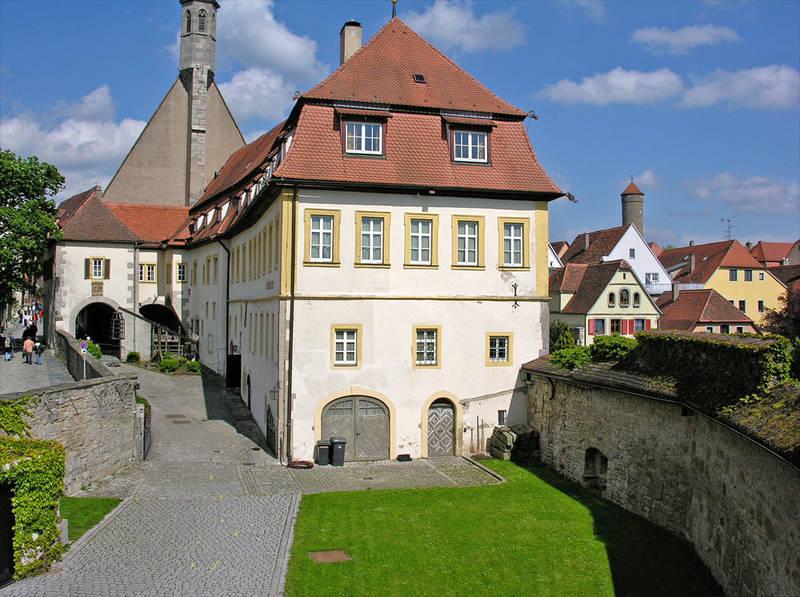
Removed from Unnamed collection
Medieval Crime and Justice Museum
Is it gruesome, scary, or simply an educational journey through time? That's one way to sum up the Medieval Crime and Justice Museum in the charming town of Rothenburg ob der Tauber. Nestled in the historic building of the former Johannis Cloister, this museum sits right next to the St. Johannis Church. Fun fact: you would have entered the town through the Red Gate around 1400, just steps from where this museum stands today. So, what awaits inside the Medieval Crime and Justice Museum, and is it a place you can bring your kids? As you step inside, prepare for an intriguing exploration of the darker side of history. This museum isn't just about the macabre; it's a deep dive into the fascinating world of medieval law and order. From ancient torture devices to peculiar punishment methods, the exhibits provide a vivid glimpse into the past. But fear not, parents: the museum is designed to be educational and thought-provoking, making it a suitable experience for children with curious minds. Just be ready for a few wide-eyed moments! Rothenburg itself is a delightful medieval town that seems straight out of a fairy tale, with its cobblestone streets and half-timbered houses. After your museum visit, take a leisurely stroll through the town's picturesque lanes, perhaps stopping for a traditional German pastry or a hearty bratwurst. The town's charm is bound to enchant you, leaving you with memories as lasting as the stories you've uncovered at the museum. Whether you're a history buff or just love a good story, this museum and the town surrounding it offer a perfect blend of education and enchantment.
Explore more places related to this search:
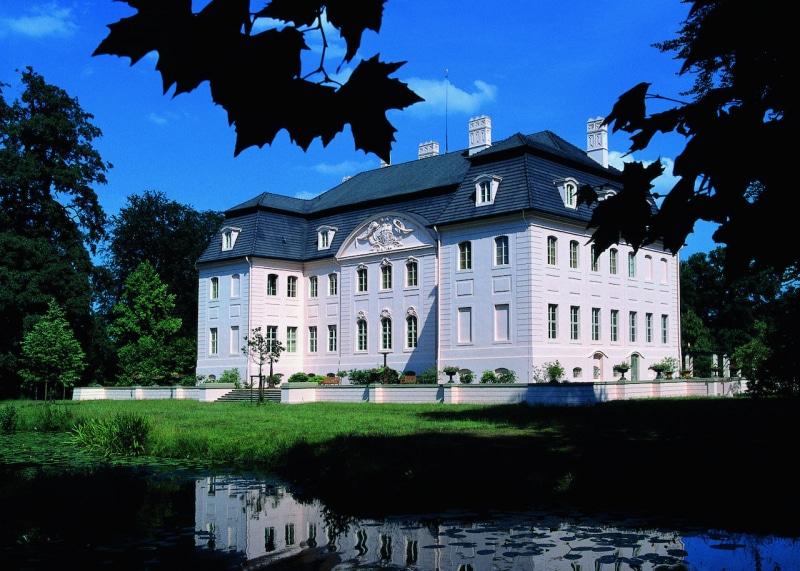
Removed from Unnamed collection
Stiftung Fuerst Pueckler Museum Park und Schloss Branitz 
Visitors to Branitz Castle are in for a treat, as they will experience the authentic interiors from the world and era of Prince Pückler. The castle's library offers a glimpse into the prince's mind, while the Oriental rooms transport guests to the prince's grand adventure to the pyramids of Egypt. It's like stepping into a different time and place, where history and imagination intertwine seamlessly. One of the most captivating aspects of Branitz Castle is its surrounding landscape, meticulously designed by Prince Pückler himself. The park is a masterpiece of garden artistry, featuring lush greenery, serene lakes, and whimsical pathways. It's a perfect spot for a leisurely stroll, offering a peaceful escape from the hustle and bustle of modern life. So, whether you're a history enthusiast or simply looking for a tranquil retreat, Branitz Castle and its grounds promise a memorable experience.
Map
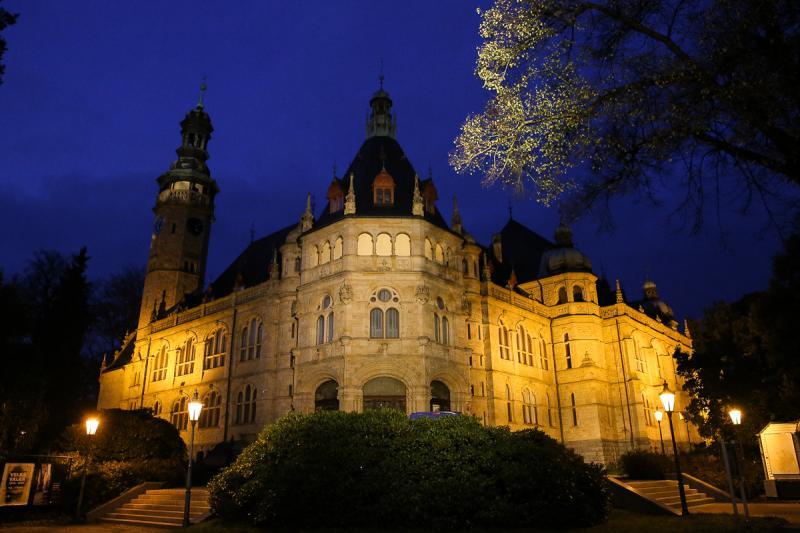
Removed from Unnamed collection
Museum of North Bohemia 
Back in 1895, the Board of Trustees for the Industrial Museum of North Bohemia decided on a project by Viennese architect Friedrich Ohmann to bring their vision to life. Construction kicked off in 1897 and wrapped up by 1898, thanks to the diligent work of Gustav and Ferdinand Miksch's Liberec company. They followed the detailed plans from the Berlin-based studio Griesbach & Dinklage. Today, this architectural gem stands as a testament to the era's innovation and style. Nestled in the charming city of Liberec, the museum showcases a fascinating blend of cultural history and modern exhibits. It's a must-visit spot for anyone interested in exploring the rich heritage of North Bohemia, offering a unique peek into the past while engaging with the present. Whether you're a history buff or simply curious, the museum offers a welcoming escape into the stories of yesteryear.
Map

Removed from Unnamed collection
Dresden Royal Palace 
Dresden’s Royal Palace, once the epicenter of power for Saxon princes and kings, is a place where history whispers from every corner. First recorded in the 14th century as a castle complex, its transformation into a four-wing palace took shape in the 15th century. Tragically, a fire in 1701 left it in ruins, but Augustus the Strong led its reconstruction. Fast forward to the last months of World War II: air raids again reduced the palace to ashes, with its approximately 500 halls and rooms devastated. Sadly, most of its priceless interiors were lost forever. Come 1985, a new chapter began as reconstruction efforts kicked off to establish a museum complex for the Staatliche Kunstsammlungen Dresden, or Dresden State Art Collections. By April 2004, the first museum, the Kupferstich-Kabinett, or Collection of Prints, Drawings, and Photographs, had moved in, showcasing its treasures. The New Green Vault opened its doors in September 2004, followed by the Historic Green Vault in its original rooms by September 2006. Today, the palace's exterior boasts a Neorenaissance style, while its courtyard is adorned with Renaissance-style sgraffito paintings. For those who love a good view, the Hausmann Tower offers a breathtaking panorama of the Old Town. Since 2010, visitors have been able to marvel at the English Stairway, a Baroque masterpiece that, after five years of meticulous reconstruction and a four-million-euro investment, is open once more. It will eventually serve as the main entrance to the Staatliche Kunstsammlungen museums. Another gem, the Türckische Cammer, or Turkish Chamber, opened in March 2010, revealing countless small treasures that had been hidden from public view for over seventy years. The palace's full renovation was wrapped up by 2013, breathing new life into this historic marvel. For those wandering through Dresden, the Royal Palace is more than just a stop on your itinerary; it's a journey through time, with each room telling a story of resilience and rebirth. Whether you're an art aficionado or a history buff, this palace is an absolute must-see, a place where past and present dance in perfect harmony.
Map

Removed from Unnamed collection
The East Bohemian Museum 
The East Bohemian Museum in Hradec Králové stands as a gem of architectural brilliance, crafted by the renowned Czech architect Jan Kotěra. This museum is more than just a building; it's a masterpiece that captures the spirit of the city. Inside, you'll find a treasure trove of exhibits that tell the story of this fascinating region. From its rich history to its cultural nuances, the museum offers a comprehensive glimpse into East Bohemia’s past and present. Don't miss the chance to wander through its halls and admire the intricate details of Kotěra's design. You might even find yourself inspired by the seamless blend of historic charm and modern elegance. While you're there, take a moment to enjoy the view from the museum's terrace, which offers a stunning panorama of the cityscape, painting a perfect picture of Hradec Králové's unique allure.
Map
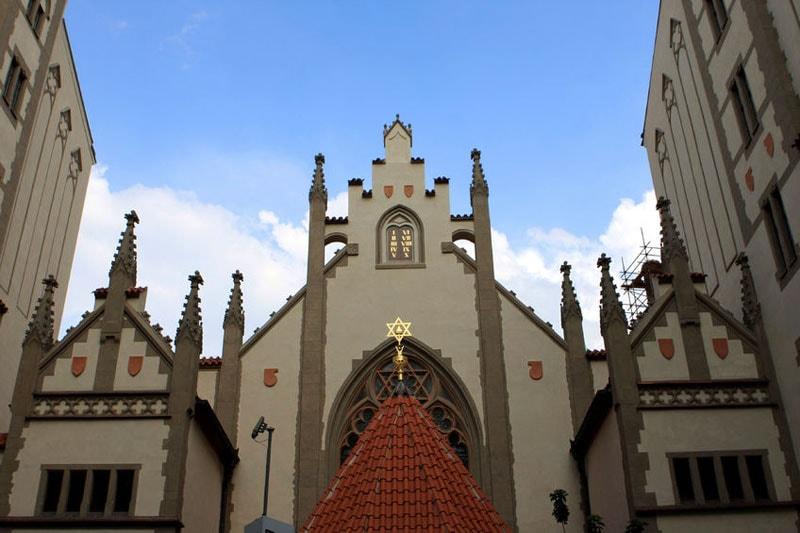
Removed from Unnamed collection
Prague's Jewish Quarter (Ghetto) 
Prague's Jewish Quarter, known as “Židovské město” in Czech, is a fascinating gem nestled in the heart of the Czech Republic's capital. Officially called Josefov, this area is a captivating blend of beauty and historical complexity. Once the largest Jewish ghetto in Europe, its Old Jewish Cemetery stands out as one of the continent's most extraordinary sites. Walking through Josefov feels like stepping into a living museum where each corner whispers stories from the past. Many cities around the world have, or once had, Jewish quarters where Jewish communities thrived. Think of Jerusalem, Seville, or New York. These areas often took the form of ghettos, each with its unique history and culture. Prague's Jewish Quarter, recognized as a UNESCO World Heritage site since 1992, is undeniably one of the most significant. When you visit Prague, exploring this neighborhood is a must, offering a poignant reminder of a somber chapter in history while also showcasing its undeniable beauty and charm. Beyond the history, the Jewish Quarter is a vibrant part of Prague today, with charming cafes, boutique shops, and vibrant street life. You can wander the narrow cobblestone streets, marvel at the stunning architecture, and even catch a glimpse of the legendary Golem said to protect the quarter. It's a place where the past and present coexist harmoniously, making it an unforgettable stop on any Prague itinerary.
Map

Removed from Unnamed collection
Wroclaw Royal Palace 
Since 2009, the Royal Palace in Wrocław has been the heart of the City Museum, showcasing an intriguing exhibition titled “1000 Years of Wrocław.” Originally known as Spaetgen’s Palace, named after one of its earliest owners, this historical gem has an enchanting past. In 1717, Baron Heinrich G. Spaetgen purchased a quaint Baroque mansion near Rynek. Upon his death in 1750, Prussian King Frederick II acquired the palace, transforming it into a regal residence. Wrocław then joined Berlin and Königsberg (now Kaliningrad) as a city of royal importance. Subsequent Prussian monarchs expanded the palace, modifying its design and ambiance. By the mid-19th century, the palace stretched from Wolności Square to Kazimierza Wielkiego Street. After the fall of the empire, city authorities took over the palace. In the 1920s, they opened the Palace Museum, inviting the public to explore its rich history. Unfortunately, the building suffered significant damage during World War II. Today, visitors can wander through its halls and discover the stories embedded in its walls. The museum offers not just an exploration of the city’s past, but also a glimpse into the evolution of royal life. Artifacts and exhibitions paint a vivid picture of the region's cultural heritage. The palace itself is a testament to resilience, having risen from the ashes of war to become a beacon of history and culture.
Map
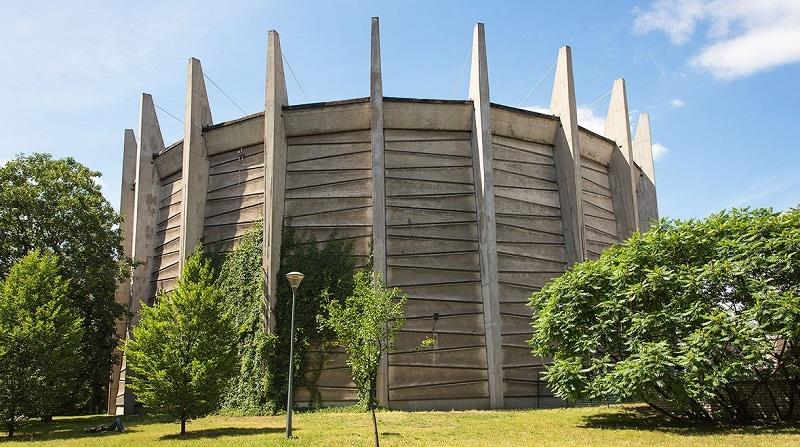
Removed from Unnamed collection
Raclawice Panorama 
Picture this: a colossal painting that stretches an impressive 114 meters in length and towers 15 meters high. This masterpiece, depicting the Battle of Racławice from April 1794, captures a moment when the Poles triumphed over the Russians. The brainchild of Jan Styka, a renowned painter from Lviv, this project brought together an ensemble of talented artists including Wojciech Kossak, Tadeusz Popiel, Teodor Axentowicz, and Włodzimierz Tetmajer. In just nine months, they completed this awe-inspiring work. Housed in a specially constructed rotunda in Stryjeński Park, the Panorama of the Battle of Racławice (Panorama Racławicka) quickly became a must-see attraction in Lviv. The artistic techniques used here are nothing short of revolutionary. Imagine a 19th-century version of today's 3D technology: special panoramic perspectives, strategic lighting, and detailed scenography create a multidimensional experience that brings history to life. Visitors are in for a treat as they can listen to the fascinating history behind the painting and the events it portrays in an impressive selection of 16 languages, including Korean, Japanese, Croatian, and even Esperanto. For those who are blind or visually impaired, an audio description ensures that no one misses out on the rich storytelling. While you're there, take a moment to appreciate the seamless blend of art and history. It's not just a painting; it's an experience that transports you back in time, making you feel as though you're part of the 18th-century battlefield. Whether you're a history buff or an art enthusiast, this panorama is sure to leave a lasting impression.
Map
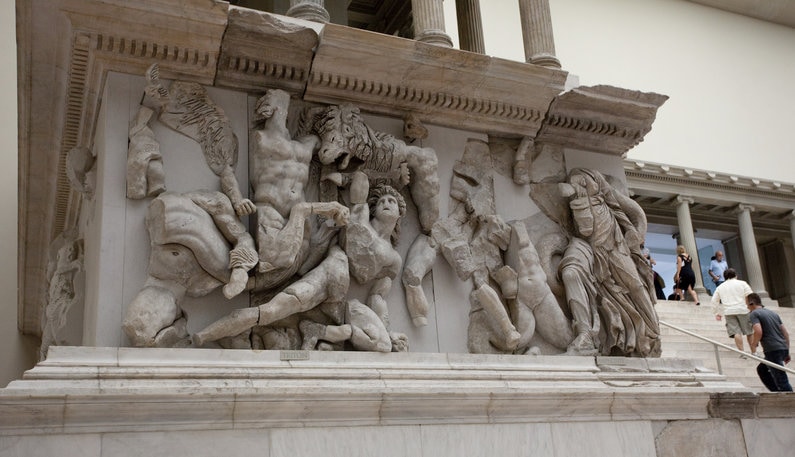
Removed from Unnamed collection
Pergamon Museum 
The Pergamonmuseum is truly a marvel. Its halls are brimming with some of the most awe-inspiring treasures that were once buried and forgotten. This museum showcases the immense history of the Ancient East, presenting collections that you won't find anywhere else. It's named after the Pergamon Altar, a stunning Hellenistic masterpiece crafted from white stone. This imposing structure invites you to ascend its steps, offering a chance to experience 2,000 years of history firsthand. But don't linger too long in just one spot, as there are countless other wonders under the museum's roof. You'll find artifacts from Iran, Asia Minor, Egypt, and the Caucasus, and these ancient worlds have been meticulously recreated for you to explore within the Pergamonmuseum. What makes this museum even more fascinating is its location in the heart of Berlin, on the famous Museum Island, a UNESCO World Heritage site. The island itself is a cultural treasure trove, home to several of the city's most prominent museums. As you wander through the Pergamonmuseum, imagine the stories behind each artifact, the ancient hands that crafted them, and the journeys they've taken to end up here. It's a place where history comes alive, offering a unique glimpse into the past that you won't soon forget.
Map

Removed from Unnamed collection
Wax Museum Karlstejn 
The tour kicks off with what feels like stepping inside a massive kaleidoscope. Thanks to rear projection and an array of mirrors, this 70-meter-high imaginary sphere creates a mesmerizing spectacle. You'll get a glimpse into the lives of craftsmen, potters, and armorers, and even encounter the legendary rat. You can witness the medieval prison firsthand, peek beneath the executioner's arm, and envy the White Lady's ability to vanish from these chilling spots whenever she pleases. In contrast, there's a more comforting exhibit focused on the founders of the castle and numerous other significant monuments of Charles IV. Here, a traditionally dressed clown brings a touch of humor, while four of Charles's wives, including the formidable Elizabeth of Pomerania—rumored to have been able to bend iron with her bare hands—watch over everything with gentle indulgence. You'll uncover the mysteries of the alchemical court, where Rudolf II oversees astronomer Tycho de Brahe, Yehuda Lowe crafts a giant Golem, and the legendary Sirael captivates hapless men with just a glance. As you move forward through time, you'll encounter figures like Maria Theresa, Napoleon, and Francis Joseph I. In the final hall, you'll meet Masaryk, Antonín Dvořák, Bedřich Smetana, and even Mother Teresa. Each character is brought to life with such detail that you might find yourself transported to their era. Oh, and don't miss out on the charming little cafes nearby, perfect for soaking up the local vibe after your tour.
Map
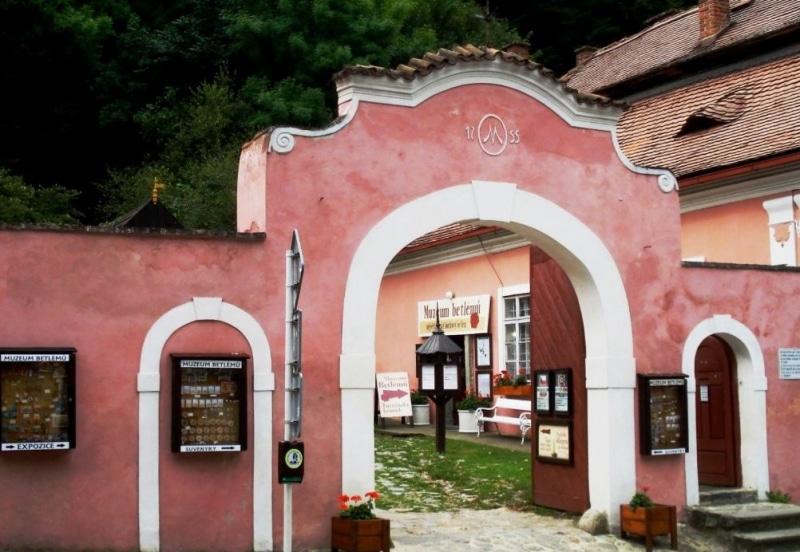
Removed from Unnamed collection
Museum of Nativity Scenes 
Nestled in the charming Karlštejn Square, the Museum of Nativity Scenes offers a delightful peek into Czech tradition. As you wander through the ground floor, you're treated to an exquisite collection of Czech historical nativity scenes, lovingly carved from wood. These are complemented by scenes crafted from unique materials like wax, sugar, and even bread. It's like stepping into a whimsical world where each display tells a story of its own. Kids, and let's be honest, the young at heart too, will be enchanted by the mechanical nativity scenes that seem to come alive with their own motion. Ascend to the top floor, and you'll discover the crown jewel: the Karlštejn Royal Nativity Scene. This isn't just any nativity scene; it's the largest puppet nativity scene in the Czech Republic, sprawling over an impressive 80 square meters. Imagine a miniature Karlštejn Castle, brought to life with 46 hand-carved wooden puppets, each dressed in the attire of yesteryear. It's a sight to behold as Santa Claus, in a delightful twist, receives gifts from ten of the most significant Czech monarchs, including the legendary Charles IV, all presented from the iconic Karlštejn Castle. Venture down to the house's lowest levels, where two floors of Baroque cellars await. Here, you'll find a captivating permanent exhibition on the history of winemaking in Karlštejn, along with the Sklep exhibition hall. The cellars also hold a mysterious allure with the figure of the White Lady, a character tied to a somewhat morbid tale from the castle's history. It's a story that intrigues both children and adults alike, adding a touch of mystery to your visit. For those curious about the local winemaking tradition, Karlštejn is nestled in an area known for its vineyards, making it a perfect spot for wine enthusiasts. Be sure to explore some local wine-tasting experiences while you're in the region.
Map

Removed from Unnamed collection
Clock Museum 
Imagine stepping into a place where time itself is the star attraction. At this incredible museum, you'll find over 10,000 exhibits showcasing clocks from every corner of the globe. It's the most extensive clock exhibition in the country, and it promises a fascinating journey through time. European powerhouses in the art of watchmaking like England, France, Switzerland, Germany, and Austria-Hungary are prominently featured. But that's not all. The collection also includes exquisite pieces from China, Japan, and America, offering a global perspective on the evolution of timekeeping. As you wander through the exhibits, you'll encounter clocks and timing devices of every conceivable type and size. From pocket and wrist chronometers to alarm clocks, table clocks, wall clocks, and towering grandfather clocks, there's something for everyone. The craftsmanship of renowned watchmakers and ingenious inventors is on full display, alongside the work of anonymous artisans whose creations have stood the test of time. You'll discover the simplicity of all-wood mechanisms, marvel at intricate carillons, and admire the precision of regulators, the most accurate machines of their time. Whether you're drawn to the charm of painted cottage clocks, the elegance of those from a burgher's home, or the opulence of aristocratic pieces, the museum offers a glimpse into different lifestyles and eras. One of the highlights is an authentically restored ancient watchmaking workshop. This area is equipped with period machine tools, measuring instruments, and work aids, providing insight into the meticulous craftsmanship required to produce these timeless pieces. For those curious about the evolution of timekeeping technology, it's a must-see. Did you know that the museum hosts special events where visitors can watch live demonstrations of traditional clockmaking techniques? It's a rare opportunity to see history brought to life by skilled artisans. Whether you're a horology enthusiast or simply curious about the art of timekeeping, this museum is a captivating destination that invites you to appreciate the beauty and complexity of clocks from around the world.
Map
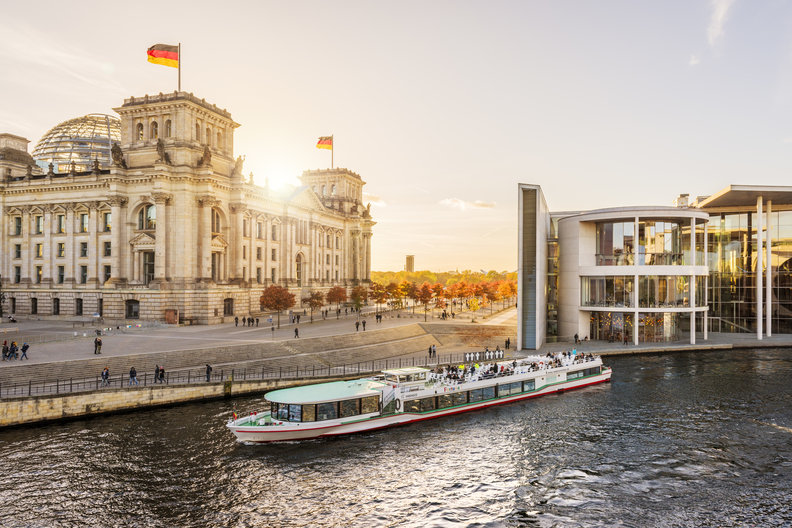
Removed from Unnamed collection
Reichstag 
The Reichstag stands as a global icon of democracy, housing the German parliament in the heart of Berlin. Every year, countless visitors flock to this historic site, and it's easy to see why. Where else can you marvel at a breathtaking panorama while knowing that the political decisions shaping the future are happening right below your feet? This architectural marvel is not just a feast for the eyes but also a poignant reminder of history's impact on the present. Exploring the Reichstag offers a variety of experiences. You can choose to join a guided tour, tune into a plenary session (though you'll need to brush up on your German), or ascend to the dome and roof for a unique perspective. Each option provides its own slice of intrigue and insight. For those interested in more than just politics and architecture, the Reichstag is surrounded by lush parks and bustling cafes, perfect for a leisurely stroll or a quick coffee break. On sunny days, the nearby Tiergarten offers a green oasis, where locals and tourists alike enjoy picnics or simply bask in the sun. This blend of history, culture, and everyday life makes a visit to the Reichstag a truly enriching experience.
Map
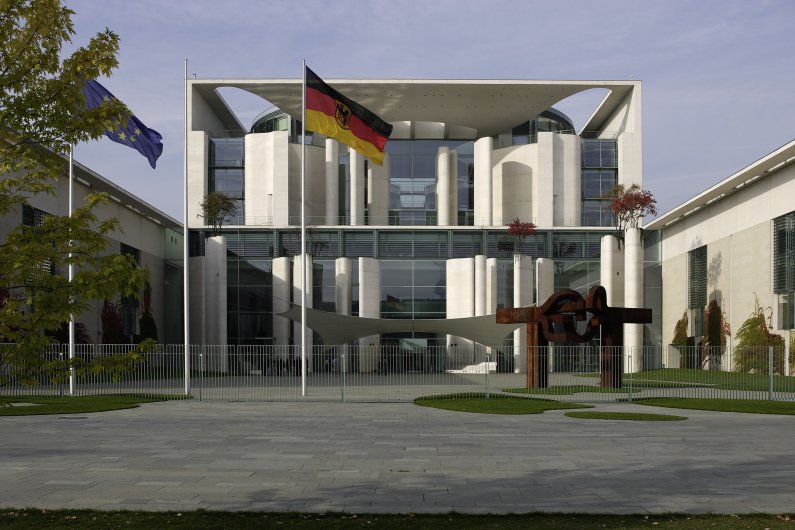
Removed from Unnamed collection
Band des Bundes 
In the heart of Berlin, the government buildings create a ribbon stretching across the River Spree, a powerful symbol of the city's historical unity between East and West. These modern-day architectural wonders, home to the parliamentary offices and the chancellery, were constructed only after the Berlin Wall fell and the city was designated as Germany's capital. They're a must-see for anyone exploring Berlin, offering a glimpse into the nation's contemporary design and political spirit. The Band des Bundes, as it's known, was conceived as a gesture of reunification. This line of government buildings and MPs' offices serves both as a physical connection and a symbolic bridge linking the once-divided parts of the city. Visitors find themselves not just in the geographical center of Berlin, but also in a place steeped in historical significance and modern-day importance. Since 2006, these striking concrete and glass structures have become the first sight welcoming travelers arriving at Berlin's main station. The area around the buildings is not just about politics, though. Nearby, you'll find lush green spaces perfect for a leisurely stroll or a picnic on a sunny day. Plus, the River Spree offers opportunities for a relaxing boat tour, providing a unique perspective on Berlin's stunning skyline.
Map

Removed from Unnamed collection
Charlottenburg Palace 
Discover the allure of rococo elegance at Charlottenburg Palace, a jewel nestled in Berlin. Once the summer retreat of royalty, today it stands as the city's largest and most splendid palace. In the Neuer Flügel, or New Wing, you'll find the staterooms and the rococo ballroom, famously known as the Goldene Galerie. This ballroom, with its intricate gold leaf designs, is a sight to behold. The Silver Vault is another treasure trove, showcasing stunning tableware crafted from gold, silver, glass, and porcelain. Imagine dining like royalty with around 100 intact table services that paint a vivid picture of courtly feasts. The Prussian crown jewels are on display here too, along with imperial insignias and personal treasures of Friedrich the Great, including his exquisitely designed snuffboxes. Each piece tells a story of opulence and history. Don't miss the Porcelain Cabinet in the Old Palace, where you'll be surrounded by a stunning collection of blue-and-white porcelain. It's like stepping into a world where every piece of china is a work of art. Charlottenburg Palace is not just about opulence; it has a rich history that reflects the changing tides of European power and taste. Walking through its halls, you can almost hear the whispers of the past. It's a must-visit for anyone keen on history, art, or simply soaking up the grandeur of a bygone era.
Map

Removed from Unnamed collection
The Old Town Hall and the Market Place 
The Old Town Hall truly lives up to its name. Can you believe its cornerstone was laid all the way back in 1556? Since 1909, this historic building has been home to the Museum of City History, and it continues to charm visitors with its storied past. As you wander through the halls, imagine the centuries of events that have unfolded within its walls. If you’re planning a visit, here’s a tip: try to catch one of the guided tours. They offer fascinating insights into Leipzig’s history and reveal some hidden gems you might miss on your own. Whether you're a history buff or just curious, this place has a way of connecting you to the past in the most intriguing ways.
Map

Removed from Unnamed collection
Karlovy Vary Museum 
Nestled in the picturesque landscapes of the Czech Republic, the Museum Karlovy Vary offers a unique cultural experience spread across several charming villages in the region. In the heart of Karlovy Vary, you'll find the museum's exhibits thoughtfully displayed in two distinct buildings. Each venue is brimming with fascinating artifacts and stories that bring the area's rich history to life. Karlovy Vary itself is renowned for its stunning architecture and world-famous hot springs, making it a delightful destination for culture enthusiasts and relaxation seekers alike. While you're there, don't miss the chance to stroll through the town's elegant colonnades and indulge in a sip of the therapeutic waters. Whether you're an avid history buff or simply curious, the Museum Karlovy Vary promises an engaging journey into the past, surrounded by the natural beauty and charm of this enchanting region.
Map
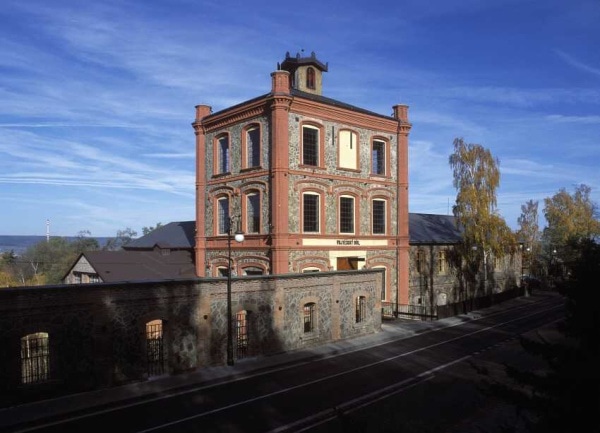
Removed from Unnamed collection
Pribram Mining Museum 
The story of one of Europe's largest mining museums, and also one of the Czech Republic's oldest, traces back to 1886 with the founding of the Regional Museum in Příbram. Nestled in the Central Bohemian Region, this museum is not just a historical archive; it's a journey through the gritty, fascinating world of mining. As you wander through its extensive exhibits, you'll uncover tales of miners' lives, the evolution of mining technology, and the significant role this industry played in shaping the region. Don't miss the chance to explore the underground tunnels that offer a glimpse into the past, where you can almost hear the echoes of history. Plus, Příbram itself is a charming town with quaint cafes and beautiful architecture, making it a delightful stop for any traveler keen on exploring Czech culture.
Map

Removed from Unnamed collection
Kunstmuseum Stiftung Moritzburg Arts Museum 
Halle, a city brimming with artistic flair, proudly hosts its largest art gallery: the Stiftung Moritzburg Art Museum Saxony-Anhalt. This cultural gem is nestled within the venerable walls that lend the museum its distinguished name. Excitingly, new halls are continuously being constructed to showcase its ever-growing collection of treasures, ensuring that each visit offers something fresh and inspiring. Visitors can expect a delightful blend of contemporary and classical art, with exhibits that span centuries and styles. The museum itself is a work of art, seamlessly blending old-world charm with modern architectural elements. It’s a must-visit for anyone looking to soak up the artistic spirit of Halle. After exploring the museum, take a stroll around the picturesque city, where history and creativity meet at every corner.
Map
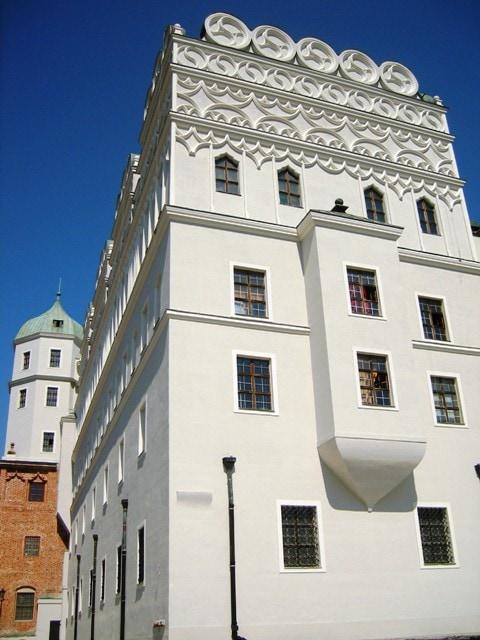
Removed from Unnamed collection
Castle of the Pomeranian Dukes 
The story of the Pomeranian Duke's Castle is like stepping into a time machine that takes you back to the 13th century. Imagine a grand wooden residence perched on a hill beside the serene Odra River. This was the humble beginning of what would become a stone fortress under the visionary rule of Barnim III over a century later. The castle, or Zamek Książąt Pomorskich as it's known in Polish, didn't stop there. It continued to grow and evolve, echoing the history of the region with every new addition. Today, the castle stands as a testament to the rich history and architectural evolution of Szczecin. Walking through its grounds, you can almost hear the whispers of the past. The castle has been meticulously restored and now hosts a variety of cultural events, from art exhibitions to concerts, making it a lively hub of activity. If you’re planning a visit, take your time to explore its nooks and crannies; each corner has a story to tell. A visit here isn't just about seeing the sights; it's about feeling the pulse of history beneath your feet.
Map

Removed from Unnamed collection
Szczecin National Museum 
The main buildings of the National Museum in Szczecin, known locally as Muzeum Narodowe w Szczecinie, are nestled along the Chrobry Embankment in what was once the Maritime Museum. It's a treasure trove of artifacts that tell the rich story of this region's past. From relics that whisper tales of seafaring adventures to a fresh, permanent exhibit celebrating the Golden Age of the Pomeranian Region, there's plenty to captivate your imagination here. Don't miss the viewing tower perched atop the museum. The climb up the narrow staircase may test your stamina, but the panorama from the top is a reward worth the effort. Another gem within the National Museum's collection is Szczecin's History Museum, or Muzeum Historii Szczecina, housed in the charming Old Town Hall. This spot lets you wander through time, exploring the city's vibrant history. Take a moment to appreciate the intricate architecture of the Old Town Hall itself; it's a stunning example of Gothic Revival style. Szczecin is a city that effortlessly blends the past with the present, and its museums are a testament to this harmonious fusion.
Map
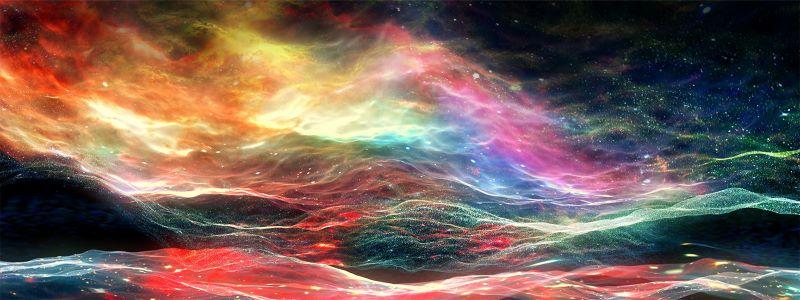
Removed from Unnamed collection
Zeiss Planetarium Jena 
Nestled in the heart of Jena, the Zeiss Planetarium stands proudly as the world's longest-serving planetarium. It's a cosmic gem where the universe unfurls in breathtaking detail. Imagine gazing up at a starry sky that rivals nature's own, surrounded by a 360° dome projection and immersed in 64-channel surround sound. Whether you're curious about distant planets or eager to be swept up in a thrilling music show, this place offers an unforgettable experience. The planetarium's educational programs are a treasure trove of astronomical wonders. They guide you through the vast history of astronomy, the birth of the universe, and the marvels of modern space travel. It's like having the cosmos at your fingertips, with each show presenting impressive visuals that make learning feel like an adventure. When it comes to music shows, the Zeiss Planetarium doesn't hold back. You'll witness a spectacular display of technical wizardry: from 360° projections to dazzling laser shows and immersive 3D sound. Picture yourself rocking out to the legendary tunes of Queen or swaying to epic rock ballads and iconic hits from the past few decades. It's a sensory experience that music lovers won't want to miss. Jena itself is a charming city, rich in history and culture. While you're here, take a stroll through its picturesque streets or explore nearby attractions like the JenTower for panoramic views of the city. The Zeiss Planetarium is more than just a stop on your itinerary; it's a celestial voyage that promises to leave you starry-eyed and inspired. Come and feel the magic of the cosmos at the Zeiss Planetarium Jena!
Map

Removed from Unnamed collection
Kulturhistorisches Museum 
At the dawn of the 20th century, the Magdeburg Cultural History Museum was brought to life by the esteemed Viennese architect Friedrich Ohmann. With a nod to the Renaissance and Gothic eras, Ohmann crafted a masterpiece that echoes the grandeur of these styles. The museum's doors opened in 1906, welcoming its first director, Theodor Volbehr, who reigned until 1931. Volbehr curated an impressive collection of art and crafts, sourced from various societies and the city itself, spotlighting these treasures as key witnesses to Magdeburg's storied past. The museum is a treasure trove for history buffs and art lovers alike. Its exhibitions offer a fascinating glimpse into the evolution of Magdeburg, showcasing everything from medieval artifacts to modern art pieces. The building itself is a visual delight, with intricate architectural details that transport you to a different era. Whether you're wandering through its halls or admiring the facade, the museum offers an enriching experience that captivates the imagination.
Map
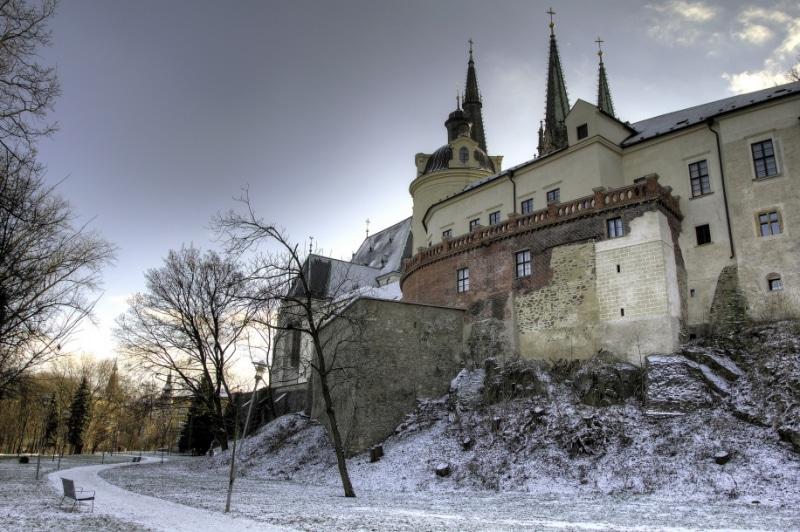
Removed from Unnamed collection
Olomouc castle 
You absolutely must visit the Olomouc Castle, perched majestically on Wenceslas Hill. It's a place where history whispers in the wind, telling tales of the past. Back in 1306, the last of the Přemyslid dynasty, Czech King Wenceslas III, met his tragic end here. As you wander around, you'll be captivated by the Bishop's Palace, renowned for its stunning Romanesque windows. The Gothic St. Wenceslas Cathedral, now the seat of the Archbishop of Olomouc, stands proudly nearby. Don't miss the Archdiocesan Museum, an initiative by Pope John Paul II, offering a fascinating glimpse into the region's rich ecclesiastical history. While you're there, take a moment to appreciate the breathtaking views of the surrounding cityscape from the castle grounds. The blend of historical architecture and vibrant local culture creates a unique atmosphere that is both enchanting and inspiring. Olomouc, with its charming cobblestone streets and welcoming locals, promises an experience full of discovery and delight. So, pack your curiosity and let Olomouc surprise you with its hidden gems and timeless allure.
Map
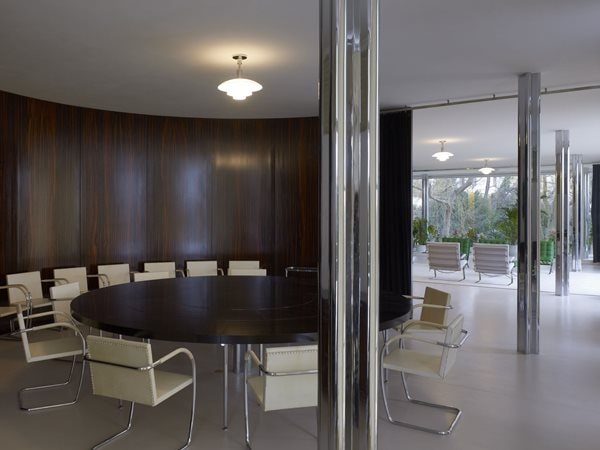
Removed from Unnamed collection
Villa Tugendhat 
Villa Tugendhat stands as a testament to modern architecture, witnessing both the rise of innovative design and the poignant stories of its inhabitants. Crafted by the renowned German architect Mies van der Rohe, this villa is celebrated as one of the four most significant villas globally. Its architectural significance and historical value have earned it a well-deserved place on the UNESCO World Heritage list. Nestled in Brno, Czech Republic, Villa Tugendhat offers a unique glimpse into the evolution of contemporary living spaces. The villa's design features expansive glass walls that blur the lines between indoor and outdoor environments, a revolutionary concept at the time. Visitors often marvel at the seamless integration of the structure with its surroundings, creating a sense of openness and tranquility. If you ever find yourself in Brno, this architectural masterpiece is a must-see, offering both history and inspiration in equal measure.
Map
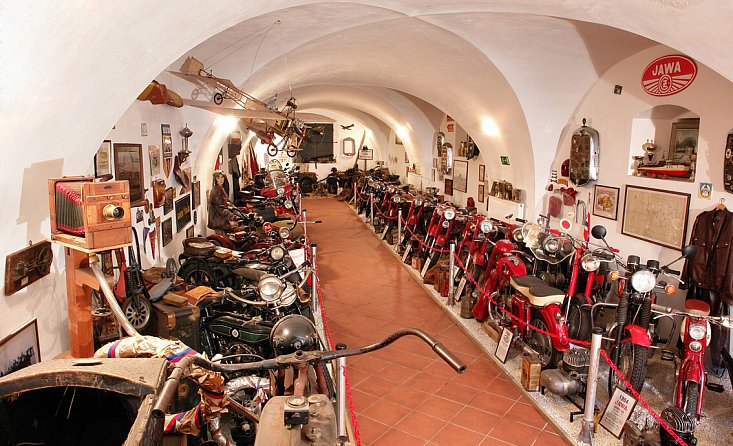
Removed from Unnamed collection
South Bohemian Motorcycle Museum 
For motorcycle enthusiasts and history buffs alike, the Motorcycle Museum located on Piarist Square in České Budějovice is a must-visit. This treasure trove is among the largest public collections of two-wheeled vehicles in the Czech Republic, offering a fascinating glimpse into the evolution of these iconic machines. Picture this: rows upon rows of gleaming motorcycles, each with its own story and unique design. From vintage classics to modern marvels, the museum showcases a wide array of models that will captivate both seasoned riders and curious onlookers. Beyond the bikes themselves, the museum provides insightful context about the cultural and technological advancements that have shaped the world of motorcycling. It's a place where history roars to life, inviting visitors to imagine the open road adventures of yesteryear. And while you're there, don't forget to explore České Budějovice, a city that offers charming architecture, cozy cafes, and a welcoming atmosphere that's perfect for a leisurely day out.
Map

Removed from Unnamed collection
Spilberk Castle 
Imagine a place steeped in chilling legends, where history whispers through ancient stones and panoramic views of the city stretch as far as the eye can see. Welcome to Špilberk Castle. This iconic landmark is one of the two most significant features of the Moravian capital, Brno. Once infamous for being Europe's most dreadful dungeon, today it stands as one of Brno's cherished monuments. Špilberk's role has dramatically evolved over the centuries. Originally a royal castle and the residence of the Moravian margraves, it later transformed into a grand Baroque fortress. It served as the harshest prison of the Austrian monarchy and eventually became a military barracks. Today, it houses the Brno City Museum and serves as a bustling cultural hub in the city. Throughout the year, Špilberk Castle hosts a variety of cultural events. From art exhibitions to music festivals, there's always something happening here. The castle grounds are perfect for a leisurely stroll, offering breathtaking views of Brno. It's a spot where history buffs and casual visitors alike can find something to marvel at. The castle's blend of history and culture creates a unique atmosphere, making it a must-visit for anyone exploring Brno.
Map

Removed from Unnamed collection
Moravian Museum 
The Moravian Museum, founded way back in 1817 by an imperial decree from František I, is truly a treasure trove of history. With over six million items in its collection, it offers a fascinating glimpse into the past. If you’re curious about prehistoric life, Pavilon Anthropos is a must-see. Here, you can marvel at a life-size mammoth and explore the challenges faced by prehistoric families. It's a captivating journey through time. While you're there, make sure to check out the museum's impressive collection of fossils and ancient artifacts. These exhibits bring the ancient world to life in a way that's both educational and awe-inspiring. Plus, the museum's location in the charming city of Brno adds an extra layer of appeal, with its mix of historic architecture and modern vibes. A visit here is both a step back in time and a refreshing cultural experience.
Map

Removed from Unnamed collection
The Regional Museum 
The Regional Museum Neubrandenburg, established in 1872, proudly stands as one of the oldest civic museums in Mecklenburg Western-Pomerania. Nestled in the western part of the city center, the museum is split between two nearby locations, each offering a rich tapestry of history and culture. As you wander through the exhibitions, you'll uncover the fascinating history of Neubrandenburg and its surrounding environment. These permanent exhibits are thoughtfully complemented by special exhibitions that rotate throughout the year, each exploring different intriguing themes. When visiting, take a moment to appreciate the museum's architecture, which reflects the region's history and adds another layer to your experience. Whether you're a history buff or just curious about the local culture, the Regional Museum Neubrandenburg is a treasure trove of stories waiting to be discovered. Don't miss the chance to chat with the friendly staff who are always eager to share insider tips and recommendations for exploring the area.
Map
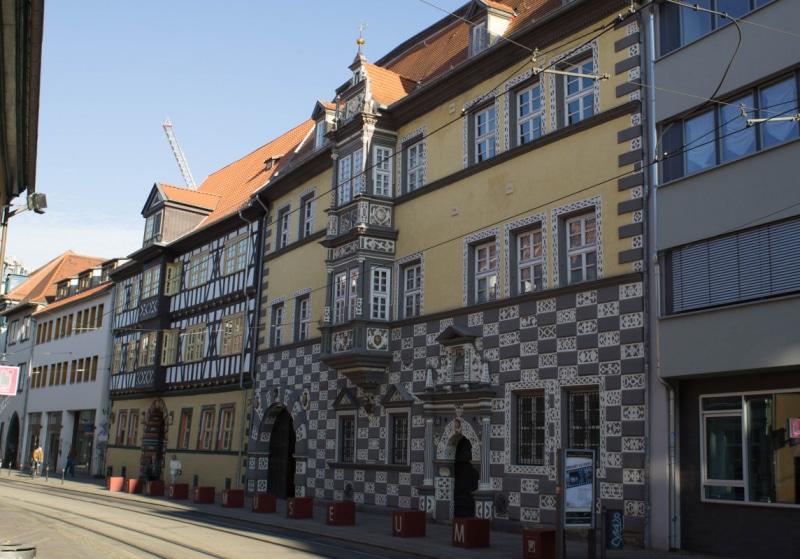
Removed from Unnamed collection
Stadtmuseum Haus zum Stockfisch 
Nestled in one of the most iconic late Renaissance buildings, the City Museum of Erfurt offers a captivating glimpse into the past of one of Thuringia's oldest cities. The museum's exhibits invite visitors to explore Erfurt's rich history and heritage. After undergoing extensive reconstruction and redesign, it proudly reopened its doors in June 1994, ready to share its fascinating stories. Erfurt itself is a treasure trove of history, with its medieval charm and stunning architecture that transports you back in time. As you wander through the museum, you'll uncover tales of the city's past that are as intriguing as they are enlightening. Don't miss the chance to stroll through the picturesque streets surrounding the museum, where you'll find quaint cafes and shops that perfectly complement your historical journey.
Map
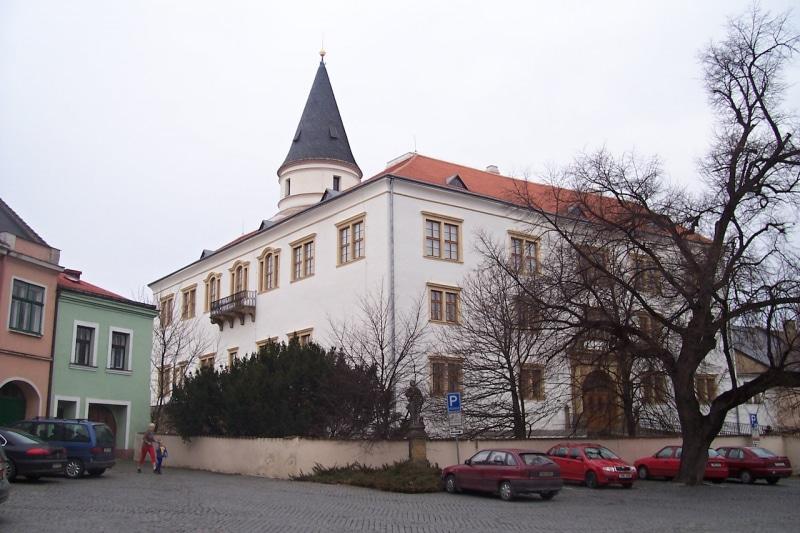
Removed from Unnamed collection
Comenius Museum 
Nestled in the charming town of Přerov, the Museum of Jan Amos Comenius stands as a beacon of history and culture. It's not just the oldest museum of its kind worldwide but also a captivating journey through time. Housed within a stunning Renaissance chateau, the museum offers a fascinating collection that will intrigue any curious traveler. From gleaming mineral specimens to meticulously reconstructed school classrooms spanning from the 17th century to the 1950s, each exhibit tells a unique story. The museum also proudly showcases the rich ethnographic heritage of the Haná region, offering a delightful glimpse into its traditions and way of life. As you wander through the exhibits, you can almost hear the echoes of past students whispering in the halls and imagine the vibrant lives of those who once called this region home. Přerov itself is a delightful town with cobblestone streets and quaint cafes, perfect for a leisurely stroll post-museum visit. Don't miss the chance to chat with locals, who are always ready to share a tale or two about their beloved town. Whether you're a history buff or just looking to explore something new, the Museum of Jan Amos Comenius promises an enriching experience that will linger in your memory long after your visit.
Map
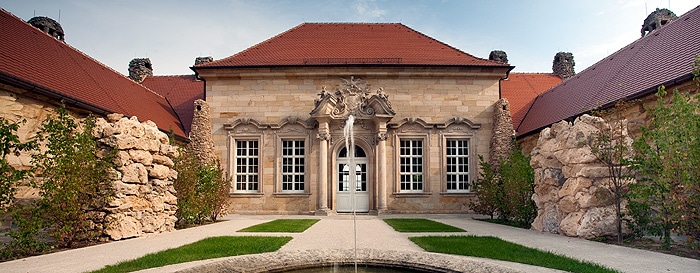
Removed from Unnamed collection
Eremitage - Old Palace 
Just a few kilometers outside the quaint town lies the Hermitage Palace, affectionately referred to as the Old Palace. This majestic structure commands attention as it stands proudly amidst an expansive park filled with lush, tree-covered slopes rising above the serene Roter Main River. The palace's historical grandeur whispers tales of its past, inviting visitors to wander through its storied halls and picturesque gardens. Did you know the Hermitage was initially a retreat for the Margraves of Bayreuth? Today, it offers a peaceful escape from the bustling town, a perfect spot for reflection or a leisurely stroll.
Map
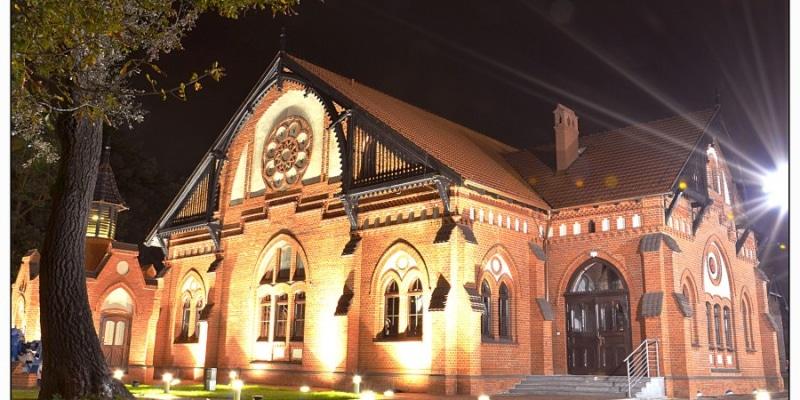
Removed from Unnamed collection
Museum of Waterworks 
Tucked away in the Szwederowo district, the first Polish Museum of Waterworks awaits discovery. This unique museum is set within the historic Las Gdański water intake and a charming old Water Tower. It was brought to life thanks to an EU project titled "Environmental Education Based on Historic Buildings - Pumps and Water-Tower," which was part of the Regional Operational Project from 2007 to 2013. Visiting this museum is like stepping back in time. You'll explore the fascinating history of water management and gain insights into how these structures contributed to the region's development. It's not just for history buffs; anyone with a curiosity about how our cities evolved will find it intriguing. The exhibits make learning about the past engaging and fun. Plus, the area around the museum is perfect for a leisurely stroll. The nearby park offers a peaceful retreat, with plenty of spots to relax and soak in the surroundings. Bring a camera; the architecture and natural beauty provide excellent photo opportunities. Whether you're a solo traveler or with friends, this hidden gem offers a refreshing break from the usual tourist trails.
Map
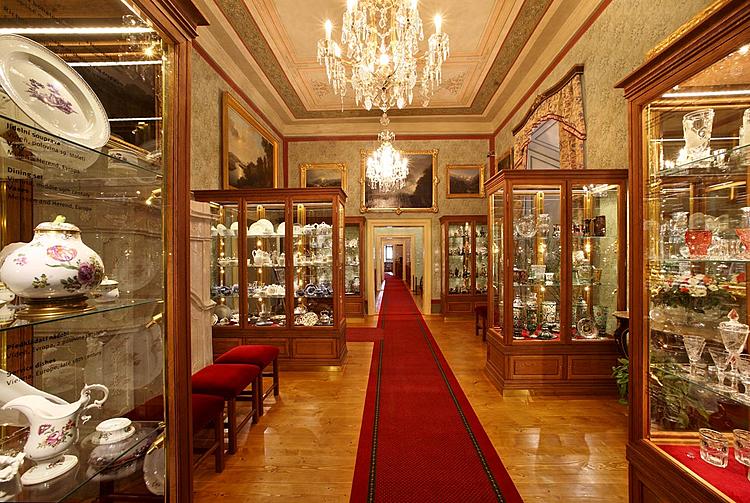
Removed from Unnamed collection
Castle Museum & Castle Tower 
In 2011, the National Heritage Institute unveiled a captivating addition to the Český Krumlov Castle: the Castle Museum exhibition. This is not your typical museum experience; here, visitors uncover the hidden stories and treasures of the Rožmberk, Eggenberk, and Schwarzenberg families, who once held sway over the Krumlov estate. The best part? You can explore at your own pace, opting for an audioguide if you fancy a bit of narrative flair. Perched on a narrow rocky promontory, the six-storied Castle Tower, alongside the Little Castle's residential palace, commands a breathtaking view over the Latrán and the Vltava River. The architecture is a delightful blend of Gothic and Renaissance styles, showcasing its evolution from the 13th century. The Castle Tower's oldest sections date back to the Gothic era, with the ground floor and first floor setting the stage. The second floor emerged in the 14th century, while the Renaissance belfry crowns the third floor. Interestingly, a bell from 1406 hints at its enduring Gothic roots. In 1581, Baldassare Maggi of Arogno transformed the castle, adding an elegant arcaded gallery to the tower, and in 1590, artist Bartoloměj Beránek - Jelínek adorned it with stunning mural paintings and intricate motifs. The Castle Tower stands proudly as the emblem of Český Krumlov, capturing the town's rich history and undeniable charm. As Karel Čapek once put it, it's "the towerest of all towers." Climbing to the top rewards you with a panoramic view that is nothing short of spectacular. Beyond the tower, Český Krumlov itself is a gem to explore. Wandering through its cobblestone streets feels like stepping into a fairy tale, with medieval buildings, quaint shops, and charming cafes inviting you to pause and soak in the atmosphere. The town's vibrant cultural scene, with frequent festivals and events, ensures there's always something exciting happening.
Map


